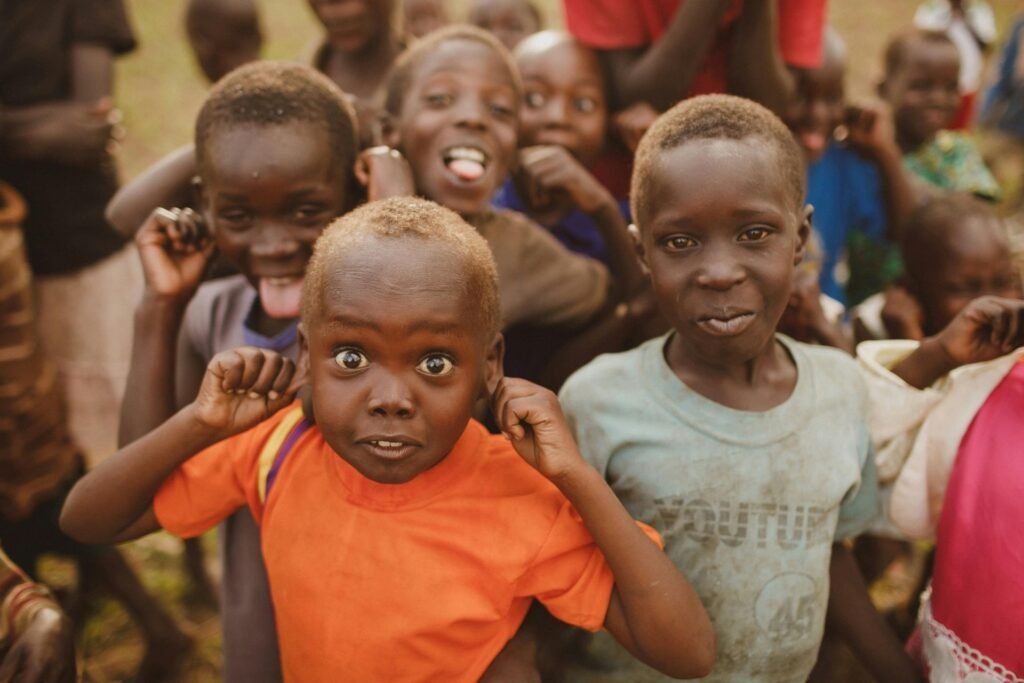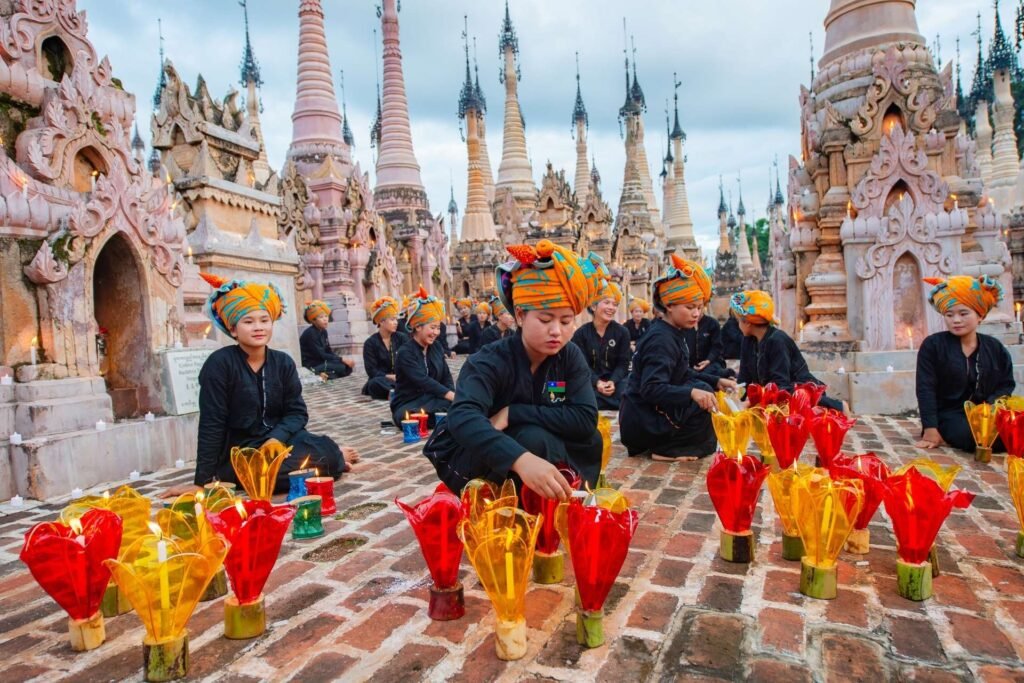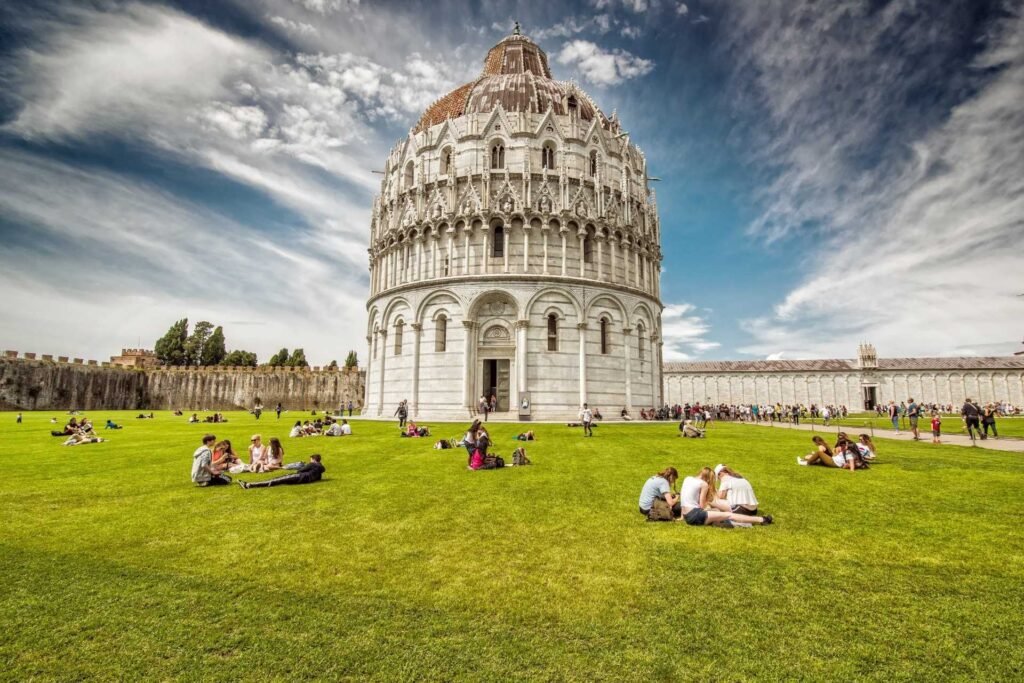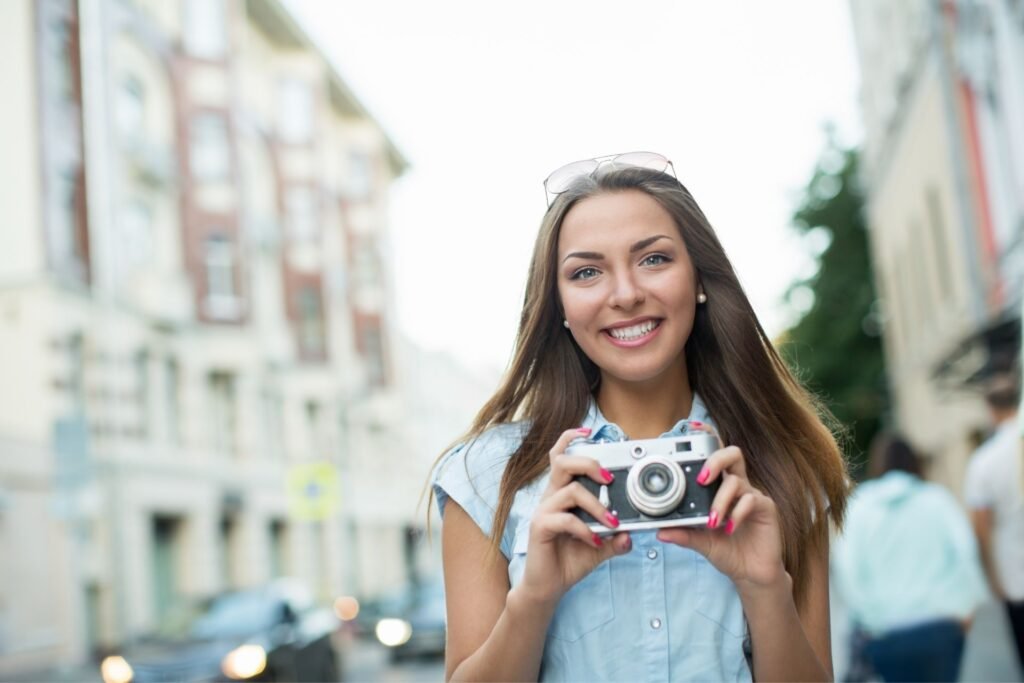How to Capture People and Traditions Respectfully? (Tips)
There’s something deeply humbling about capturing the authentic spirit of a culture through photography. When done right, cultural photography creates bridges between communities, preserves traditions, and tells stories that might otherwise go untold. However, behind every powerful cultural image lies a fundamental question: How do we honor the dignity and traditions of the people we photograph?
The art of respectful cultural photography goes far beyond technical skills or composition rules. It requires cultural sensitivity, genuine respect, and an understanding that every person in front of your lens is a human being with their own story, beliefs, and boundaries. In an age where images can travel instantly across the globe, the responsibility of cultural photographers has never been greater.
This guide explores how to approach cultural photography with the respect and mindfulness it deserves, ensuring that your images celebrate rather than exploit the communities you encounter.
Understanding the Foundation of Respectful Photography
Before you even pick up your camera, respectful cultural photography begins with a fundamental shift in mindset. Taking photos of people requires ethical considerations such as informed consent, respectful behavior, and awareness of the power dynamic at play. You’re not just a photographer; you’re a cultural ambassador representing your own background while documenting another.
The concept of informed consent forms the cornerstone of ethical cultural photography. You should always ask for consent before taking a photo, whether verbally or through gestures. If you do not receive consent, do not take the photo. This simple principle acknowledges that people have the right to control how their image is used and shared.
Understanding power dynamics is equally crucial. As a photographer, especially when visiting communities different from your own, you often hold significant privilege—economic, social, or technological. Recognizing this imbalance helps you approach photography with humility rather than entitlement.
The golden rule applies powerfully to cultural photography: treat others’ dignity and rights as you would want yours treated. This mindset transformation from “taking” photos to “creating” them collaboratively changes everything about how you interact with your subjects.
Research and Preparation
Successful respectful cultural photography begins long before you arrive at your destination. Research forms the foundation of cultural sensitivity and helps you avoid inadvertent disrespect or misunderstanding.
Start by learning about the cultural significance of the community you plan to photograph. Learn a little bit about the cultural significance of the event and any ceremonies ahead of time. Understanding religious practices, social hierarchies, gender roles, and taboos helps you navigate situations appropriately and identify potential sensitivities.
Different cultures have varying attitudes toward photography. In some societies, photographing certain people, places, or ceremonies may be considered deeply disrespectful or even dangerous. In some places it’s considered rude or even criminal to photograph women, police officers, or military personnel. This research isn’t just about avoiding offense—it’s about showing genuine respect for the communities you’ll encounter.
Learn basic greetings and polite phrases in the local language. While you don’t need to be fluent, showing effort to communicate in someone’s native language demonstrates respect and often opens doors to more authentic interactions. Simple phrases like “hello,” “thank you,” “may I?” and “beautiful” can transform encounters from transactional to meaningful.
Understanding local customs around dress, behavior, and social interaction helps you blend in rather than stand out as an obvious outsider. This cultural awareness allows you to focus on photography rather than navigating constant cultural missteps.
The Art of Asking Permission
Obtaining consent is both an art and a necessity in cultural photography. It is courteous to ask permission and if someone says no, then respect their wishes. However, asking permission effectively requires understanding cultural norms around communication and respect.
In many cultures, direct eye contact and a straightforward request work perfectly. In others, approaching through intermediaries or following specific social protocols shows greater respect. Observe how locals interact with each other and follow those patterns when possible.
Non-verbal communication often transcends language barriers. Holding up your camera with a questioning expression, pointing to it, and then to the person while maintaining a friendly demeanor usually communicates your intent clearly. Give people a sense of participation by allowing them to look through your lens or by allowing them to view the LCD screen.
When someone declines to be photographed, accept their decision gracefully and without argument. This respect often leads to better relationships and sometimes changes minds. People who initially refuse may later approach you once they see how respectfully you treat others.
Consider the difference between photographing individuals and groups. Group dynamics can be complex, and one person’s consent doesn’t necessarily speak for everyone in the frame. When photographing groups, try to make eye contact with multiple people and ensure you’re receiving positive responses from the majority.

Special Considerations for Children
Photographing children requires extra layers of sensitivity and protection. Be especially careful when taking photos of children as parents are very sensitive to issues around security and safety. Children cannot give informed consent in the same way adults can, making parental permission essential.
Always seek permission from parents or guardians before photographing children. In some cultures, this means approaching fathers, while in others, mothers make these decisions. Understanding local family structures helps you identify the appropriate person to ask.
Be aware that children’s images can be particularly vulnerable to misuse. Consider how and where you’ll share these images, and be prepared to explain your intentions to concerned parents. Some photographers choose to blur faces or avoid identifying features when photographing children in vulnerable situations.
Children often respond enthusiastically to cameras, but their excitement doesn’t equal consent. Use this enthusiasm as an opportunity to engage with parents and demonstrate your respectful approach to photography.
Navigating Sacred Spaces and Ceremonies
Religious and ceremonial spaces require the highest levels of cultural sensitivity. Show respect in private spaces – such as private residences or places of worship. These environments often have strict protocols that visitors must follow.
Many sacred spaces prohibit photography entirely, while others may allow it under specific conditions. Always ask local religious leaders or guides about photography policies before entering. Some places may allow photography in certain areas but not others, or during specific times but not during active ceremonies.
When photography is permitted, consider your behavior carefully. Flash photography may be disruptive during ceremonies, and the sound of camera shutters can be intrusive during quiet moments. Modern cameras often have silent modes that allow you to capture images without disturbing the proceedings.
Dress appropriately for religious spaces. This often means covering shoulders, legs, and sometimes heads. Bring appropriate clothing or scarves, and follow the example of local worshippers. Your respectful appearance demonstrates that you understand the sacred nature of the space.

Building Genuine Connections
The most powerful cultural photographs emerge from genuine human connections rather than opportunistic captures. Make new friends should be a priority that supersedes getting the perfect shot. When people feel comfortable with you as a person, they’re more likely to allow authentic moments to unfold naturally.
Spend time in communities without your camera initially. This allows you to understand social dynamics, identify key community members, and build relationships based on mutual respect rather than photographic objectives. Many photographers find that their best images come after they’ve established trust and rapport.
Share your own story when appropriate. Cultural exchange flows both ways, and people often appreciate learning about your background, culture, and reasons for visiting their community. This reciprocal sharing creates more balanced interactions.
Be warm, polite and respectful of traditions in all your interactions. Small gestures like learning proper greetings, showing interest in local customs, and expressing genuine appreciation for cultural sharing go a long way toward building positive relationships.
Technical Considerations for Respectful Photography
While respect and cultural sensitivity are paramount, technical considerations also play a role in ethical cultural photography. Your choice of equipment, shooting style, and post-processing approach all impact how respectfully you capture and present cultural subjects.
Consider using quieter equipment when possible. Large, professional cameras can be intimidating and may create barriers between you and your subjects. Sometimes a smaller, less conspicuous camera allows for more natural interactions and authentic moments.
Natural light photography often feels less intrusive than flash photography. Flash can be startling, especially for people unaccustomed to professional photography equipment. Learning to work with available light shows respect for the natural environment and creates more authentic-looking images.
Be mindful of your shooting position and behavior. Constantly moving around, crouching, or positioning yourself in ways that block others’ views can be disruptive. Find good positions and remain relatively still, allowing events to unfold naturally around you.
Consider the cultural implications of your post-processing choices. Overly dramatic editing, extreme color manipulation, or filters that significantly alter the reality of a scene can misrepresent the culture you’re documenting. Aim for processing that enhances rather than distorts the authentic character of your subjects.
Sharing Images Responsibly
The responsibility of cultural photographers extends beyond the moment of capture to how images are shared and used. Travel photographers have the responsibility to show an honest representation of the people, culture, and society, with respect to their dignity.
Consider creating a simple model release or permission form in the local language that explains how you intend to use the images. This doesn’t need to be a complex legal document—a simple explanation of your intentions can help people make informed decisions about participation.
When sharing images online, be thoughtful about captions and context. Avoid generalizations, stereotypes, or overly romantic descriptions that don’t reflect the complex reality of the communities you’ve photographed. Provide accurate information about locations, customs, and cultural practices.
Think carefully about which images to share publicly. Some moments, while photographically compelling, may be too personal or sacred to share broadly. The fact that someone allowed you to photograph them doesn’t necessarily mean they consented to global distribution of their image.
Consider giving back to the communities you’ve photographed. This might involve sharing prints with subjects, contributing to local causes, or using your platform to promote cultural understanding and respect.
Handling Difficult Situations
Even with the best intentions, cultural photography can present challenging situations. Knowing how to handle these moments respectfully is crucial for maintaining positive relationships and ensuring ethical practice.
If someone becomes upset about being photographed, even if you asked permission, apologize immediately and delete the image in front of them if requested. Always remember that you are a guest. Defending your actions or arguing about rights rarely improves the situation and often makes it worse.
When local authorities or community leaders question your photography, remain calm and cooperative. Have a clear explanation of your intentions ready, and be prepared to show identification or permits if required. Sometimes misunderstandings arise from lack of communication rather than actual problems.
If you encounter situations where cultural practices conflict with your personal values, maintain respectful neutrality. Your role as a cultural photographer is to document, not to judge or impose your own cultural standards. Focus on understanding rather than evaluating.

The Long View: Cultural Photography as Cultural Bridge
The ultimate goal of respectful cultural photography extends beyond individual images to creating understanding and appreciation between different communities. When done with genuine respect and cultural sensitivity, your photographs can serve as bridges that connect people across cultural divides.
By being respectful and mindful of the people we’re photographing, we can create images that tell important stories while respecting the dignity and traditions of our subjects. This approach transforms photography from a potentially exploitative practice into a collaborative art form.
Consider the long-term impact of your work. Are your images contributing to stereotypes or helping to break them down? Do they show the complexity and humanity of the cultures you’ve encountered, or do they reduce rich traditions to simplified visual tropes?
The most successful cultural photographers often develop long-term relationships with the communities they photograph, returning regularly to document changes and continuing to build trust and understanding. This ongoing engagement creates richer, more nuanced bodies of work while ensuring that photographic relationships remain reciprocal rather than extractive.
Practical Guidelines for Respectful Practice
Developing a personal code of ethics for cultural photography helps ensure consistent, respectful practice across different situations and cultures. Consider these guidelines as starting points for your own ethical framework:
Always ask permission before photographing people or private property. Be aware of cultural norms around dress and behavior. This foundational principle applies regardless of the specific cultural context you’re working in.
Just because someone is in a public space, it doesn’t mean it’s appropriate to photograph them. Public spaces don’t eliminate the need for respect and consideration, especially when photographing people in vulnerable situations or during personal moments.
Respect rules, regulations, guidelines, laws, traditions, private property, privacy, and wildlife. This comprehensive approach to respect ensures that your photography practice considers all aspects of the communities and environments you encounter.
Develop sensitivity to power dynamics and economic differences. Be aware of how your relative privilege might affect your interactions, and strive to create equitable exchanges rather than extractive relationships.
Technology and Cultural Sensitivity
Modern technology offers new tools for respectful cultural photography, but it also creates new challenges. Social media, GPS tagging, and instant sharing capabilities require additional consideration when photographing sensitive cultural subjects.
Consider the implications of location tagging when sharing images from remote or traditional communities. While you might want to share the beauty of a location, excessive tourism or unwanted attention can negatively impact communities that prefer privacy or have limited capacity for visitors.
Be mindful of how quickly images can spread online and how they might be taken out of context. An image that seems respectful in its original context might be misused or misinterpreted when shared widely without proper explanation.
Use technology to enhance rather than replace human connection. Translation apps, cultural information resources, and communication tools can help bridge language barriers and cultural differences, but they shouldn’t substitute for genuine human interaction and respect.
Building a Sustainable Practice
Respectful cultural photography requires ongoing learning and adaptation. Each culture, community, and situation presents unique challenges and opportunities for growth as both a photographer and a cultural ambassador.
Seek feedback from the communities you photograph. Ask people how they feel about your approach, what they think of your images, and how you might improve your practice. This feedback helps you understand the impact of your work from the perspective of those you photograph.
Continue educating yourself about cultural sensitivity, ethics, and best practices. The field of ethical photography continues to evolve, with new perspectives and guidelines emerging regularly. Stay informed about current discussions and debates in the photography community.
Consider mentoring other photographers who are interested in cultural photography. Sharing knowledge about respectful practices helps elevate the entire field and ensures that ethical approaches become standard rather than exceptional.

The Reward of Respectful Approach
When cultural photography is approached with genuine respect, cultural sensitivity, and ethical consideration, it becomes a powerful tool for building understanding and preserving traditions. The images you create can serve as windows into different ways of life, fostering appreciation for cultural diversity and human creativity.
More importantly, respectful cultural photography enriches your own understanding of the world and your place in it. The relationships you build, the perspectives you gain, and the cultural exchanges you facilitate often prove more valuable than any individual photograph.
The communities you photograph with respect and dignity often become lasting connections rather than brief encounters. These relationships can provide ongoing opportunities for cultural exchange, mutual learning, and collaborative storytelling that benefits everyone involved.
Ultimately, respectful cultural photography is about recognizing the humanity in every person you encounter and honoring their right to dignity, privacy, and cultural expression. When you approach photography with this mindset, your images become not just visual records but celebrations of human diversity and cultural richness.
The camera in your hands is a powerful tool, but the respect in your heart is what transforms that tool into an instrument of cultural bridge-building and understanding. Use both wisely, and your cultural photography will contribute to a more connected and empathetic world.
If you liked this article, check the other ones on Majestic Mondo website. Consider joining the Instagram community as well, to fully enjoy the beauty of our planet.




Leave a Reply